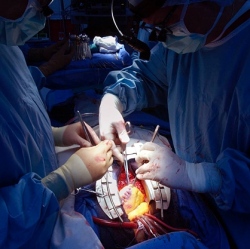
Researchers at the Institute of Bioengineering and Nanotechnology (IBN) in Singapore have developed a simple method of organizing cells and their microenvironments in hydrogel fibers.
The method provides a template for assembling complex structures, such as liver and fat tissues, for tissue or organ replacements.
According to IBN Executive Director Professor Jackie Y. Ying, “Our tissue engineering approach gives researchers great control and flexibility over the arrangement of individual cell types, making it possible to engineer prevascularized [preformed blood vessel] tissue constructs easily.”
Tissues designed with pre-formed vascular networks can promote rapid vascular integration with the host.
“Critical to the success of an implant is its ability to rapidly integrate with the patient’s circulatory system,” said Principal Research Scientist, Dr Andrew Wan. “This would ensure timely access to oxygen and essential nutrients, as well as the removal of metabolic waste products. Integration would also facilitate signaling between the cells and blood vessels, which is important for tissue development.
To achieve that development, IBN researchers used interfacial polyelectrolyte complexation (IPC) fiber assembly to produce cell-laden hydrogel fibers under aqueous conditions at room temperature. Unlike other methods*, IBN’s novel technique allows researchers to incorporate different cell types separately into different fibers, and these cell-laden fibers can then be assembled into more complex constructs with hierarchical tissue structures.
In addition, IBN researchers are able to tailor the microenvironment for each cell type for optimal functionality by incorporating the appropriate factors, such as proteins, into the fibers.
Using IPC fiber assembly, the researchers engineered an endothelial vessel network, as well as cell-patterned fat and liver tissue constructs, which have successfully integrated with the host circulatory system in a mouse model and produced vascularized tissues.
The IBN researchers are now working on applying and further developing their technology toward engineering functional tissues and clinical applications.
